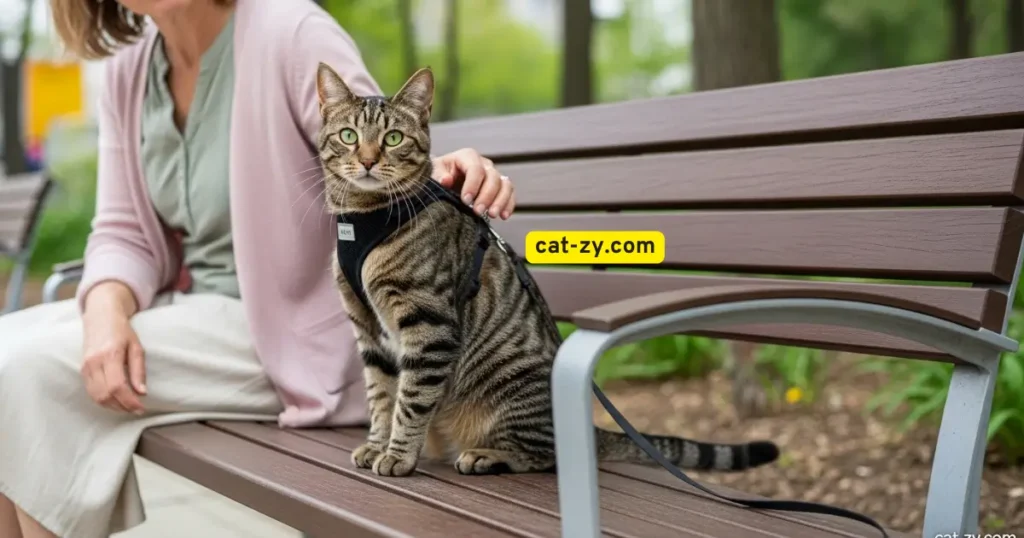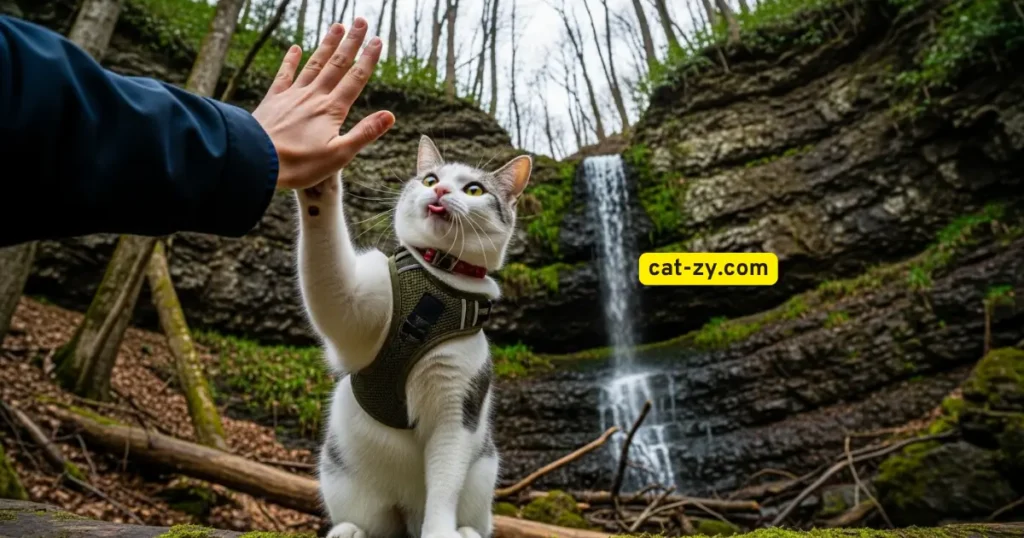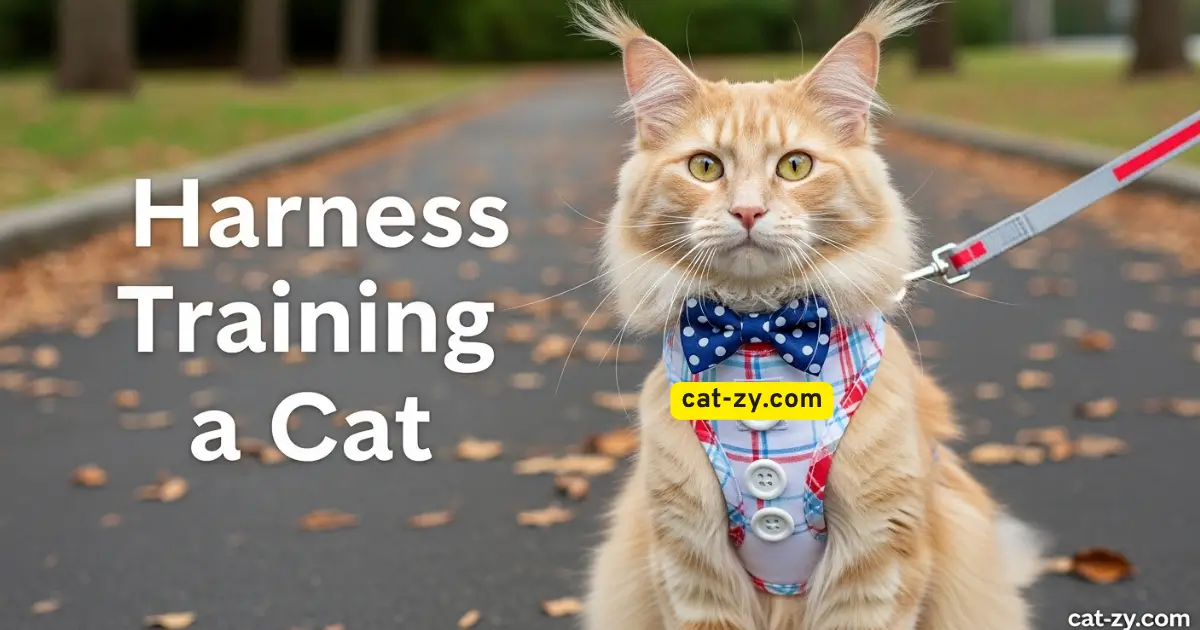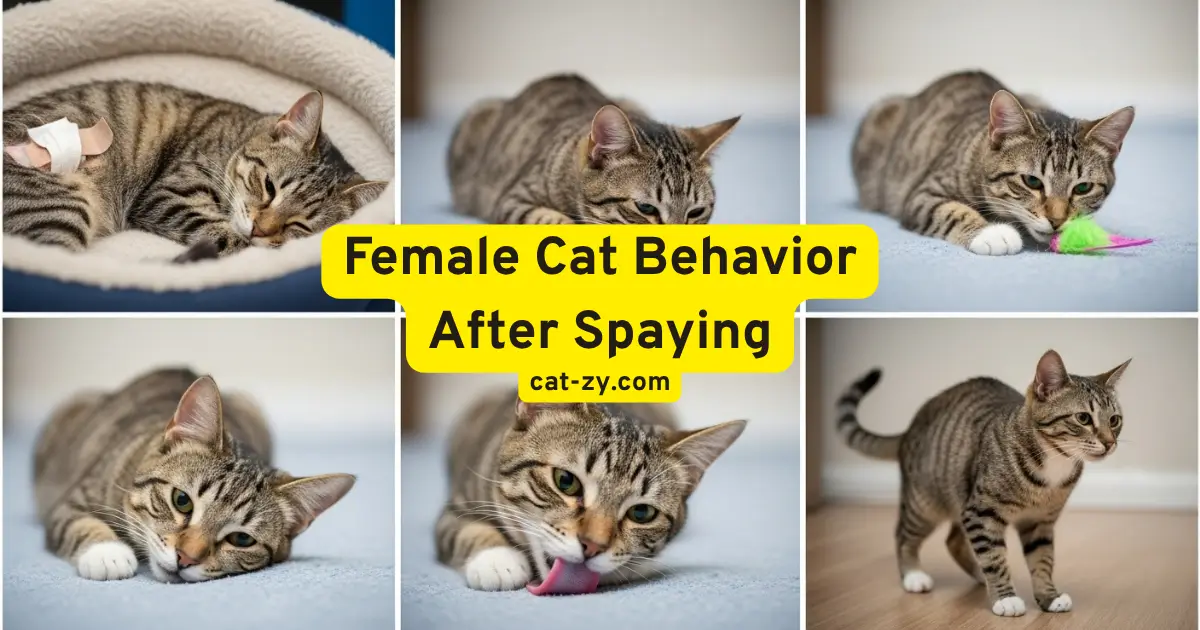Harness Training a Cat: 7 Proven Tricks That Actually Work
Are you tired of feeling cooped up with your feline friend? Do you dream of exploring the great outdoors together? You’re not alone. Many cat owners yearn for adventures with their pets, but safety concerns often get in the way.
Harness training a cat and safely introducing your feline to the outdoors can be a game-changer. It enriches your pet’s life and strengthens your bond. By learning how to guide your cat outside securely, you can provide them with mental and physical stimulation. This not only benefits your cat but also opens up new experiences for you both to enjoy together.
Discover the simple, effective methods to make outdoor adventures with your cat a reality. Our guide reveals 7 straightforward tricks to help you get started on this exciting journey.
Table of Contents
Why Harness Training Your Cat Is Worth the Effort
Harness training a cat has many benefits for both pet and owner. It makes their life safer and more exciting. By putting in the time, you give your cat a better experience.

Safety Benefits for Outdoor Exploration
Harness training ensures outdoor cat safety by keeping your pet secure outside. A good harness stops them from running off. This means less chance of accidents, fights, or getting lost. Outdoor fun becomes safer and more fun for both of you.
Mental and Physical Stimulation Advantages
Harness training also boosts your cat’s mind and body. Cats love to explore and stay active. Taking them on harness-controlled outings lets them do just that. It makes them happier and healthier.
In short, harness training is a big plus. It keeps your cat safe outside and keeps them mentally and physically active. These perks make your cat’s life richer.
Understanding Your Cat’s Personality Before Starting
Knowing your cat’s personality is key to successful harness training. Each cat is different, with unique traits that affect how they respond to cat leash training.
Identifying Fearful vs. Confident Cats
Some cats are naturally more fearful or anxious, while others are confident and outgoing. Identifying your cat’s temperament is crucial. It will guide how you train them.
Fearful cats need a slow and gentle start with the harness. Confident cats might pick it up faster.
Age Considerations for Harness Training
Age is another critical factor in harness training. Kittens are often more adaptable and learn faster. But, older cats can also learn with patience and the right method.
Older cats might need more time and a gentler approach. Knowing your cat’s age helps tailor the training to their needs. This makes the process better for both you and your cat.
Essential Equipment for Successful Harness Training a Cat
To start harness training a cat successfully, you’ll need the right equipment. This ensures a smooth and stress-free experience. The right gear makes training easier and keeps your cat safe and comfortable.
Choosing the Right Harness Style
There are many feline harness styles to choose from. You can pick from vest harnesses, H-style harnesses, and figure-eight harnesses. Vest-style feline harnesses are often the best choice for harness training a cat because they distribute pressure evenly and provide maximum comfort. They spread the force across your cat’s body.
Think about your cat’s size, age, and personality when picking a harness style.
Recommended Leash Types
Leash types vary, and some are better for cats than others. Retractable leashes might not be the best for training because they can be too long. A fixed-length leash between 4 to 6 feet is usually the best. It gives your cat enough freedom without being overwhelming.
Training Treats and Rewards
Training treats are key for positive reinforcement during pet harness training. Choose healthy, cat-friendly treats that your cat loves. The goal is to make the harness a positive experience. Pick treats that are motivating and rewarding.
By choosing the right harness, leash, and treats, you’re ready for successful harness training. Each piece of equipment is crucial for your cat’s comfort and your peace of mind during training.
Setting Realistic Expectations and Timeframes
Knowing how long harness training takes and seeing progress can make a big difference. It’s important to be patient and have realistic goals.

Typical Training Duration
The time it takes for a cat to get used to a harness varies a lot. It depends on the cat’s personality and age. Usually, it can take a few days to a few weeks for a cat to feel okay with wearing a harness. Consistency and patience are key during this time.
Signs of Progress to Look For
Look for signs that your cat is getting more comfortable with the harness. These signs include voluntarily entering the harness, less resistance to wearing it, and staying calm on the leash. Seeing these signs will keep you motivated and help you adjust your training.
By knowing how long harness training a cat usually takes and watching for progress signs, you can make your training fit your cat’s needs. This way, you can have a successful harness training experience.
Trick #1: The Gradual Introduction Method
The gradual introduction method is a great way to train your cat to wear a harness. It makes sure both you and your cat have a good time. This method helps your cat get used to the harness slowly, which reduces stress.
Step-by-Step Implementation
Start by putting the harness near where your cat likes to rest. This lets them get used to it being there. When they seem okay with it, it’s time to try them wearing it. Begin with short times and give them treats and praise for being patient.
Key steps include: letting your cat explore the harness at their own pace, gradually increasing wear time, and associating the harness with positive experiences.
Common Mistakes to Avoid
Don’t rush the introduction. Let your cat go at their own speed. Also, make sure to give lots of positive feedback. Be patient and remember, the goal is to make harness training a positive experience.
By following the gradual introduction method and avoiding common mistakes, you can train your cat to wear a harness. This opens the door to fun outdoor adventures together.
Trick #2: Positive Association Training
Creating a positive association with the harness is key to successful cat training. This method focuses on making your cat feel comfortable and relaxed while wearing the harness. It reduces stress and anxiety.
To achieve this, start by introducing the harness in a non-threatening manner. Let your cat explore the harness at their own pace. Be sure to reward their curiosity with treats.
Using Treats and Rewards Effectively
Using treats and rewards is crucial in positive association training. Every time your cat shows interest in or tolerates the harness, reward them with a treat. This positive reinforcement will help your cat associate the harness with pleasant experiences.
Choose your cat’s favorite treats to maximize the effectiveness of the rewards. It’s also essential to be consistent in rewarding your cat to avoid confusing them.
Creating a Positive Environment
Creating a positive environment is equally important. Ensure that the area where you’re conducting the training is quiet, comfortable, and free from distractions. This will help your cat feel more at ease while wearing the harness.
You can further enhance the positive atmosphere by incorporating familiar comforts, such as your cat’s favorite toys or bedding, into the training area.
By combining effective treat and reward strategies with a positive environment, you can significantly enhance your cat’s comfort level with the harness. This makes the training process smoother and more enjoyable for both you and your cat.
Trick #3: The “Wear Before Walk” Technique
Before you take your cat for a walk, learning how to harness train a cat indoors is essential. The “wear before walk” method is a vital step in harness training. It lets your cat get used to the harness in a place they know well.
To use this method well, start with indoor harness wearing sessions. Put the harness on your cat for short times, like during meals or when they’re calm. This makes them think the harness is good.
Indoor Harness Wearing Sessions
Make sure the harness fits right to keep your cat comfy. You can reward your cat with treats for staying calm in the harness. It’s a great time to see how your cat acts with the harness.
Increasing Duration Gradually
As your cat gets used to it, you can make the harness time longer. Start by adding a few minutes each day, watching how your cat feels. You want them to wear the harness for a long time without getting upset.
By using the “wear before walk” method, you can walk your cat with confidence. They’ll be comfy in their harness. This method makes walks better for your cat and strengthens your bond with them.
Trick #4: Distraction-Based Training
To make harness training more fun, try distraction-based training. This method uses things to distract your cat from the harness. It makes training easier and less stressful.
Using Toys During Harness Sessions
Using your cat’s favorite toys during harness sessions can really help. Start by letting your cat play with the toy while wearing the harness. Gradually increase the time they wear it. This makes your cat think the harness is a sign of fun.
Mealtime Harness Association
Linking the harness to mealtime is also a good idea. Putting the harness on during meals makes your cat associate it with good times. Make sure the harness is comfy and doesn’t get in the way of eating.
Distraction-based training makes harness training less scary. It also makes your cat’s life more interesting. Using toys and mealtime can make your cat more open to wearing a harness. This leads to fun times outside together.
Trick #5: The Room-by-Room Method
Slowly expanding your cat’s territory helps them feel confident in their harness. Start by introducing them to new places in small steps. Begin in the most comfortable areas.
Starting in Comfortable Spaces
First, let your cat wear the harness in a room they love, like the living room. Keep the area calm and free from distractions. Use treats and rewards to make wearing the harness a good thing.
Let your cat move around while wearing the harness. This helps them get used to its feel and weight. Watch how they act and adjust the time they spend in the harness.
Expanding Territory Gradually
When your cat seems okay in the first room, it’s time to expand their territory. Show them new rooms, bit by bit, increasing the area they can explore.
Keep giving them treats and adjust how fast you move based on their comfort. This method helps your cat feel calm and confident in their harness. Soon, going outside will be easy for them.
Trick #6: Clicker Training for Harness Acceptance
Clicker training can make your cat love wearing a harness. It’s a method that links the harness to good things. This way, your cat learns to enjoy wearing it.
Basic Clicker Training Principles
Clicker training works by rewarding good behavior. The clicker marks the exact moment your cat does something right. You’ll need a clicker and treats to start.
First, teach your cat that the clicker means treats. Then, add the harness to the training. This helps your cat understand what they’re getting rewarded for.
Applying Clicker Training to Harness Wearing
When your cat gets the clicker, you can teach them to wear a harness. Start with short times and treats. Use the clicker to show them they’re doing well.
As they get used to it, make the time longer. Always give treats and use the clicker. This makes your cat comfortable with the harness.
Trick #7: The Buddy System Approach
Having a well-trained cat friend can make harness training easier. This method uses social learning. Your cat will watch and copy another cat that’s already used to wearing a harness.
Learning from Other Harness-Trained Cats
Begin by letting your cat meet a harness-trained friend in a neutral spot. Watch how your cat acts when they see the other cat in a harness. This will help you adjust your training to make your cat feel at ease and curious.
Using Social Facilitation
Social facilitation is key in the buddy system. A trained cat can get your cat to follow their lead during training. This works best during meals or playtime, when your cat is open to new things.
To get the most out of this method, make sure both cats get along and the trained cat stays calm. With time and the right steps, your cat will learn to wear a harness easily.

Enjoying Adventures with Your Harness-Trained Cat
Now that you’ve mastered harness training a cat, you can start outdoor adventures together. A harness-trained cat can explore new places safely with you watching over them.
When you go outside, make sure your cat is comfortable and safe. Begin with short walks. Then, as your cat gets used to the harness, you can walk longer.
Going on adventures with your cat can make your bond stronger. You’ll have fun strolling in the park or exploring your neighborhood. These moments will make your cat’s life richer and help you understand them better.
By implementing these harness training a cat techniques, you and your feline companion can enjoy countless safe outdoor adventures together. You’ll explore the world together and make your life and your pet’s life more fulfilling.
FAQ
What is harness training a cat, and why is it important?
Harness training lets your cat wear a harness and walk on a leash. It’s great for safe outdoor fun. It also keeps your cat’s mind and body active and strengthens your bond.
How do I choose the right harness for my cat?
Pick a harness that’s comfy and fits well. It should not be too tight. Look for ones with adjustable straps and a strong buckle. Vest and figure-eight harnesses are good choices.
How long does it take to harness train a cat?
Training time varies by your cat’s age, personality, and past experiences. It can take a few days to weeks or even months.
Can older cats be harness trained?
Yes, older cats can learn to wear a harness. But, it might take more time and patience. Make sure to consider their health and physical abilities first.
What are some common mistakes to avoid during harness training?
Avoid forcing your cat to wear the harness and not rewarding them enough. Don’t rush the training. Be patient and let your cat go at their own pace.
Can I use a dog harness on my cat?
No, don’t use a dog harness on your cat. They are made for dogs and might not be comfortable or safe for cats. Choose a harness made for cats instead.
How do I introduce the harness to my cat?
Start by letting your cat get used to the harness’s sight, smell, and feel. Place it near where they like to rest or during meals.
What age should you start harness training a cat?
You can start harness training a cat at any age, though kittens (8-16 weeks) typically adapt faster. Adult cats can successfully learn harness training with patience and consistent practice.








3 Comments
Comments are closed.